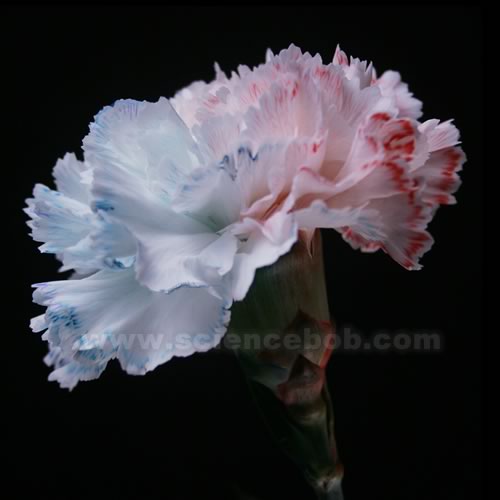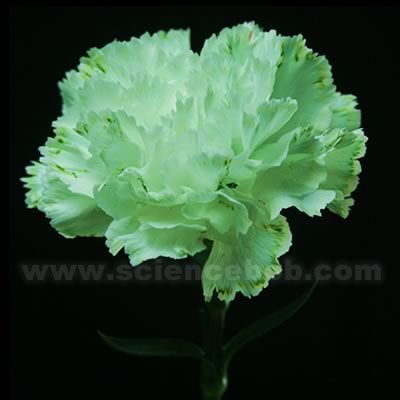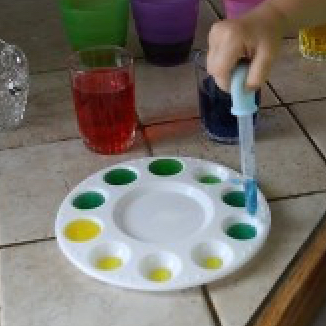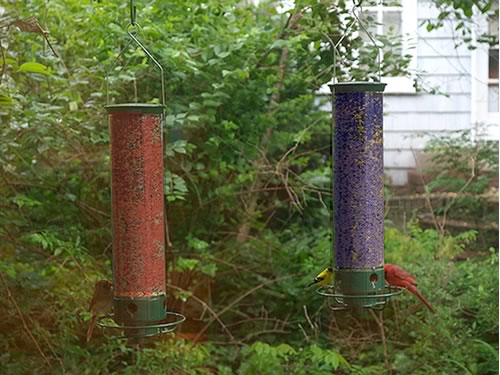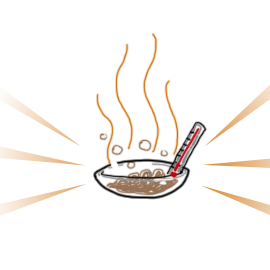Many florists sell colored carnations, but I think it is more fun to make your own! And you can learn a little something about plants in the process. Best of all, you can make the flowers just about any color you want. Start off with some white carnations from your local florist. We paid about $1.00 each here in the US. (If you just want to demonstrate how plants transport water, and watch color move through leaves, you can also perform this experiment using celery.) You will also need:
Food coloring
Some small cups
Water
Decide what colors you would like the flowers to be and then add that color to your glass. You will need to add enough food coloring to create a strong color in the water, just a few drops of coloring will not have much of an effect. (Our blue looked more like black after adding enough color.)
Snip the last centimeter of your carnation steam and place the stem in the colored water. Now just wait. Over the next day you will see signs of the coloring emerge in the petals, and even in the leaves. Our experiments have shown that sometimes the color emerges within a few hours, other times it takes a day or two. You can make green flowers for St Patrick’s day, red for valentines…you get the idea.
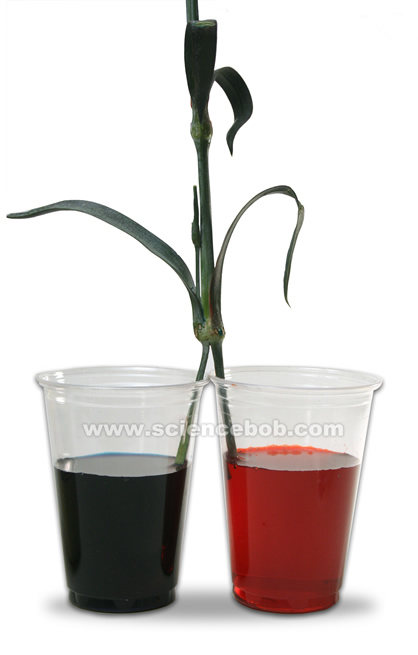 Mulitcolor? We tried splitting the stem with a razor (adults only, for that part please) and we then placed each stem into a different color of water. Sure enough the flower became multicolored (see above)…pretty cool. We wonder if it would work with three colors. If you try it, let us know.
Mulitcolor? We tried splitting the stem with a razor (adults only, for that part please) and we then placed each stem into a different color of water. Sure enough the flower became multicolored (see above)…pretty cool. We wonder if it would work with three colors. If you try it, let us know.
So how does it work?
This is the science of TRANSPIRATION. It basically means that the plant draws water up through its stem. The water is then evaporated from the leaves and flowers through openings know as stomata. As the water evaporates, it creates pressure that brings more water into the plant – similar to drinking from a straw. Some trees can transpire dozens (even hundreds) of gallons of water on a hot day. How fast a plant transpires depends on temperature, humidity, and even wind. You may want to set up an experiment that tests the transpiration rate of the flowers by placing your plant-coloring set-up in different areas (sunny & dark, windy& still, dry & humid) and see which flower ends up with the most color – more color=more transpiration.
By the way, most flower shops do not color their flowers this way. There are many different breeds of flowers that are capable of producing a wide variety of flower colors. But we still think this way is more fun. If you try this out with your kids or your class, please let us know how it went.
